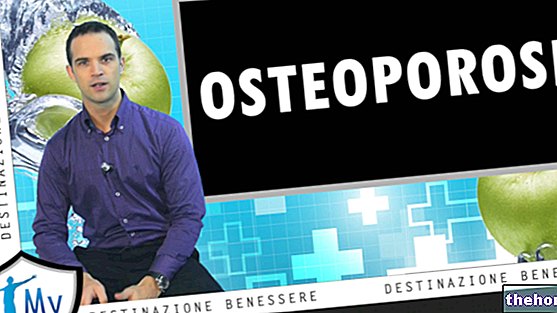Today we will talk about FOLATES, a group of compounds identifiable under the name of FOLIC ACID or, from a chemical point of view, PETROYL-GLUTAMIC acid.
Folic acid is a vitamin belonging to group B, commonly recognized with the abbreviation "Bc" or "B9".
Like the others in group B and vitamin C, folic acid is also a WATER-SOLUBLE molecule, that is, it dissolves easily in aqueous liquid. On the contrary, LIPO-SOLUBLE vitamins are those that dissolve effectively in FATTY fluids.
It should also be noted that folic acid, like other vitamins, is a LOW MOLECULAR WEIGHT compound and its MINIMUM RECOMMENDED RATION can be quantified in the order of tens or hundreds of MICROGRAMS per day.
Folic acid is a molecule as useful as it is DELICATE. First of all, its concentration in food can be reduced DRASTICALLY by COOKING, as it is a THERMO-LABILE component. It goes without saying that, in order to get the right amounts of folic acid in the diet, it is NECESSARY to consume foods with a good frequency (which we will see in the next slides) EVEN in RAW form.
Then, with regard to its REACTION capacity, it is very important to remember that (once absorbed) folic acid can be IRRIMEDIABLE damaged by certain drugs such as ANTICONCEPTIONALS and ANTICONVULSIONANTS.
On the other hand, this vitamin seems to brilliantly resist both exposure to LIGHT and OXIDATIVE stress.
Folic acid essentially has BIO-REGULATING functions, therefore, IT DOES NOT CONSTITUTE an energetic or plastic substrate (instead typical of MACRONUTRIENTS such as carbohydrates, proteins and triglycerides).
As can be understood, the metabolic destination of folic acid is of the ENZYMATIC type, or more precisely, of the CO-ENZYMATIC type. In fact, for those who don't know, enzymes and coenzymes are the main BIOREGULATION factors of the body.
Folic acid, like all vitamins, is an extremely SPECIFIC molecule. This means that, in addition to its metabolic ROLE, it is NOT able to replace or be replaced EVEN PARTIALLY by other compounds. In reality, several vitamins can participate in the same reaction and APPARENTLY have the same function; however, each one performs a task different from the others and ABSOLUTELY irreplaceable, which is why the lack of one or more vitamins can cause negative and, under certain conditions, potentially IRREVERSIBLE effects.
More specifically, folic acid represents a COENZYME involved in the SYNTHESIS of NUCEIC ACIDS, or the GENETIC MATERIAL on which the proteins, cells, tissues, organs, systems and systems of the human body are built. It is therefore not difficult to understand how SERIOUS an alteration of the "FIRST STEP" of this long and very complicated process can be!
Folic acid is also essential for the TRANSPORT of the so-called MONOCARBONOUS MOLECULES; more precisely, it is involved in the metabolism of certain amino acids (the building blocks of proteins) with great importance in the conversion of HOMOCYSTEINE into METHIONINE. I imagine that for many "LISTENERS" the meaning of these scientific terms is almost UNKNOWN. So, without going into too much detail, I specify that the excess of the amino acid HOMOCYSTEINE in the blood (a condition called HYPERHOMOCYSTEINEMIA) significantly increases, and independently of other factors, the overall cardiovascular risk.
As if that were not enough, folic acid is also FUNDAMENTAL for the reproduction of RED GLOBULES (or ERYTHROCYTES), the oxygen transporters in the blood, and WHITE GLOBULES (or LEUCOCYTES), cells responsible for IMMUNE defense. This means that any vitamin deficiency can compromise both the oxygen transport capacity and the body's defense potential from pathogens.
In the diet, folic acid comes ESPECIALLY from foods of plant origin. However, the highest concentrations are found in offal and in particular in the LIVER, an organ responsible for the partial storage of vitamin ALSO in humans. Obviously, their MODEST frequency of CONSUMPTION and the NEED to eat them "WELL COOKED", make offal a food source of little relevance. The foods that instead participate in covering the needs of this vitamin are: oranges, tomatoes, green leafy vegetables and certain legumes. For the latter, the speech made on the liver regarding prolonged cooking is valid.
A final clarification must then be made: like many other NUTRIENTS, folic acid also undergoes the ANTI-NUTRITIONAL effect of certain molecules naturally present in food. These compounds that hinder its absorption, DO NOT (such as instead it can happen for certain mineral salts) BY BINDING the nutrient and preventing its transit… rather, in the intestine, they OBSTACLE the action of one of our ENZYME (called FOLATE-HYDROLASE) responsible for making FOOD FOLIC ACID BIO-AVAILABLE.
Folic acid reaches the intestine mostly in the NOT active form. This is called PETROYL-GLUTAMIC ACID, as it is made up of TETRA-HYDROPHOLIC ACID (THF) and glutamic acid. Thanks to the enzyme FOLATO-HYDROLASE, the molecule is hydrolyzed making THF available for absorption. In the intestine FASTING, the BIOLOGICALLY active form enters the circulation by means of a specific CARRIER of the intestinal mucosa or, only at high concentrations, for PASSIVE DIFFUSION The absorption of folic acid is also influenced by the pH and the process takes place optimally with a value of 6.
We are therefore very clear that food folates can be structurally “quite” different from each other; mostly, these reach the intestine in NOT ACTIVE form and, after hydrolysis and absorption, reach the tissues to be converted into the SPECIFIC TETRA-HYDROPHOLIC COENZYME. In turn, this is DIFFERENTIATED into 4 different co-enzymes responsible for all the functions already listed.
In some metabolic processes, together with vit. Bc, cyanocobalamin (or vitamin B12) is involved.
The folic acid requirement is NOT the same for everyone. On average, it is estimated that UP to the age of 17 it is necessary to take a portion of folate between 50 and 200µg per day, while in adults the recommended ration should not be less than 200µg per day. However, the most important aspect undoubtedly concerns the needs of the pregnant woman and the nurse. Due to the more than significant increase in coenzymatic processes, the GESTANT needs about 400µg per day and a little less (350µg per day) the NURSE.
In Italy, some studies cited on the Recommended Nutrient Intake Levels for the Italian population (LARN) reveal that, in our country, folic acid intake is AVERAGE lower than necessary. This insufficiency occurs more frequently in the elderly and especially in men (about 20%) than in women (about 12%).
Insufficiency of folic acid can cause various health-related consequences. First of all, the reduction of nucleic acid synthesis compromises the metabolism of cells with more accentuated replication, especially those of the BONE MARROW. This determines the impairment of the HEMATOCRIT and, more precisely, the manifestation of the so-called MEGALOBLASTIC ANEMIA. In pregnant women, the alteration seriously affects the unborn child who, in the worst case scenario, can experience structural changes in the brain (called ANENCEPHALIA) and the spinal cord (called SPINA BIFIDA).
Excess folic acid does not seem to show any kind of toxic effect and doses of 5mg per day have been declared SAFE. However, since the massive rations of folic acid could conceal a possible deficiency in vit. B12, in subjects potentially at risk of cyanocobalamin hypovitaminosis (such as the elderly and vegans) it is strongly NOT RECOMMENDED to exceed with folic acid supplementation.




























